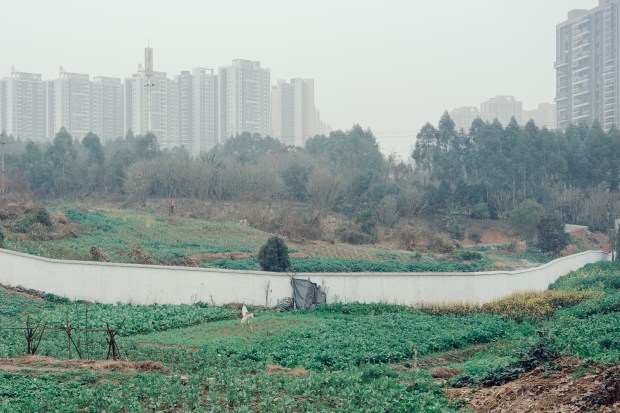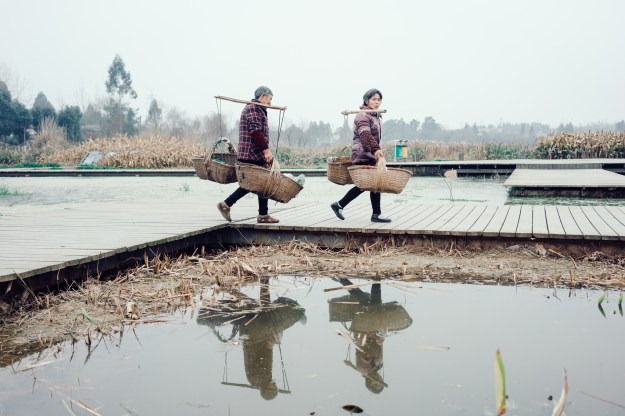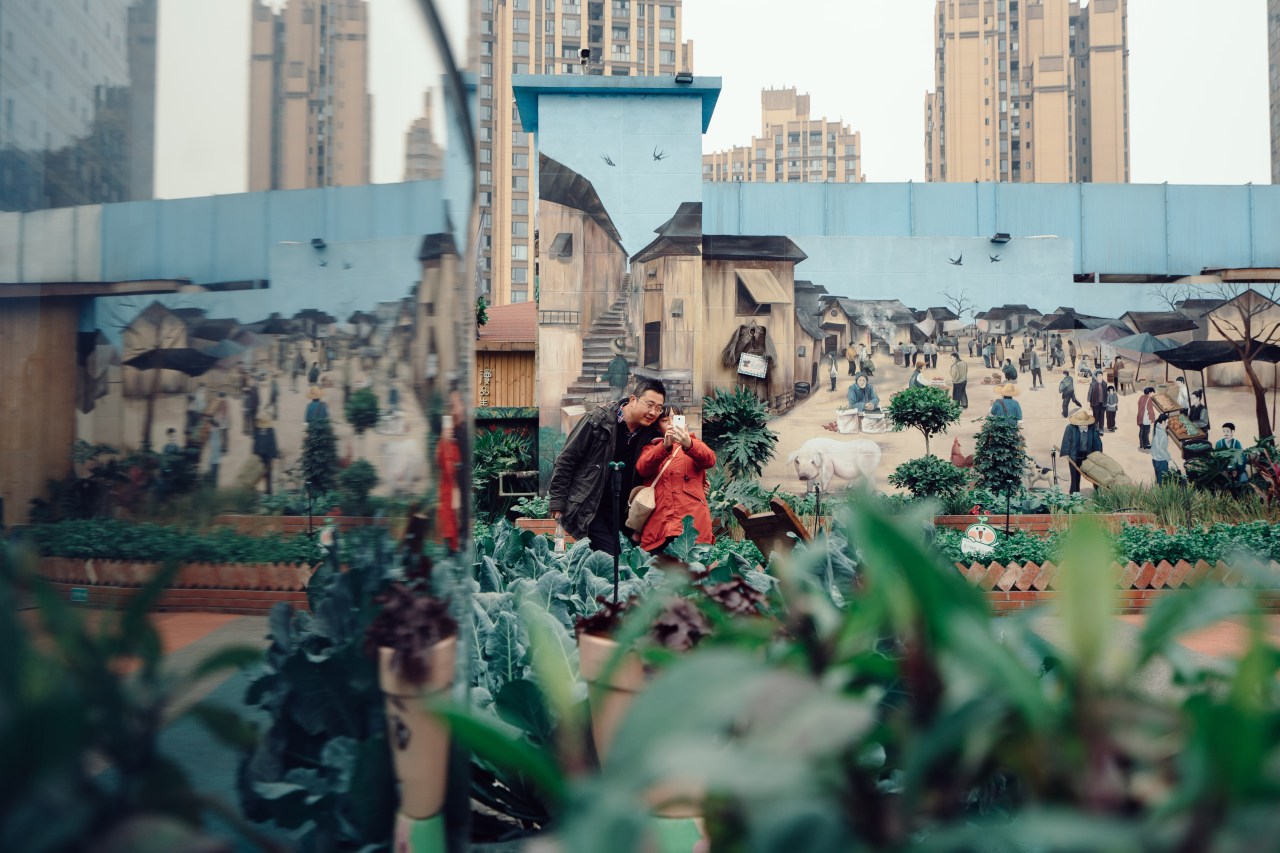In the hours before dawn, hundreds of millions of Chinese farmers are on the move.
They stream through the dark streets on motorbikes laden with freshly slaughtered pigs and woven bamboo baskets filled with anxious ducks. Coughing tractors rumble into town with flatbeds overflowing with leafy greens, crates of apples, cheesecloth-covered slabs of tofu, and cages of hens. The outdoor wet markets scattered throughout every Chinese city rev up at first light. Larger farmers take to their stalls, while one-person operations spread out blankets, set out produce, and whip out old-school scales. Many of them have been driving for some time from the rolling hills of the countryside, while others walk only a short distance from an urban plot on the outskirts of a growing city.
The first old men are already poking about, buying breakfast for their grandchildren and, for their own lunch, fresh-pressed noodles with ground pork.
Despite 50 years of nonstop urbanization, Chengdu locals still aren’t more than a short walk away from the earthy world of cultivation and husbandry.
This stubborn truth persists into the late afternoon when the sky begins to redden and the farmers make their final sales before packing up and returning to their small family plots. Many of these carefully tended squares are tucked away in the lee of new skyscrapers, sprouting up from the rubble-strewn space beside dusty construction projects. They line highways, byways, and canals. No plot unused, no earth unturned.
Although variations of this scene play out all across China, nowhere is the connection between farmer and urbanite stronger than in Sichuan province. There is hardly a plant on Earth that can’t grow in Sichuan, and the Sichuanese have made a point of growing everything they can year-round and finding a recipe for each fruit and tuber to boot.
It’s no surprise that some of the country’s first experiments with more modern approaches to urban farming—and to relationships between urbanite and farmer—took place in Sichuan’s capital, Chengdu.

Urban farming is, in a sense, a no-brainer for a country that has absorbed more people into cities in the last 30 years than there are people living in the United States. And China is on pace to do that once again by 2030.
What is new are the challenges that urbanizing hundreds of millions of people—many of them farmers—presents to China’s food security. China can’t feed its own population on the scant arable land that’s available, and that problem grows larger with each additional apartment complex that swallows up farms and farmers alike. Together with water, air, and soil pollution and widespread contamination concerns within the food industry, the issue of food and farming in China is quite serious.
Although it’s beset with the same food-safety concerns, Chengdu and the rest of Sichuan province are somewhat insulated from the food-shortage problems faced by other regions, especially in the north and northeast of the country. There are a few reasons why.





The first is access to water. Chengdu benefits from being within a short drive of the Himalayas, the source of several rivers that tumble down into the Sichuan Basin, and, in the case of the Chang River (formerly Yangtze), continue on to the Pacific Ocean. The next is geography. Sichuan is effectively sealed off from the rest of China by mountains. This affords Sichuan the luxury of sole access to the bounty of the land. As diverse as the landscape is—peaks to the west, bamboo forests to the south, and red clay hills to the east—the province is something of a closed system, fueled by the rushing waters of the Min and Chang rivers. Whereas other parts of the country may be singled out by China’s 13th five-year plan as likely candidates for large-scale industrial farms practices, Sichuan’s rolling topography makes it more difficult to consolidate smaller plots into massive single-crop farms. The last factor is climate. Sichuan is a wet place. The summers are languid and soggy, and the winters are rainy and just cold enough to be uncomfortable. All this is good news for most crops, and it’s the main reason why Sichuan’s farmers can get two rice yields in a single year.
The combination of great agricultural wealth and small family farms has not only created one of the world’s most beloved cuisines but has also resulted in a more organic approach to land stewardship and crop cultivation. The Sichuanese have taken advantage of innovative models of urban-rural interaction to preserve and protect their agricultural wealth while addressing the middle-class demand for safe, pollution-free food. Other Chinese cities have taken notice and are adapting these models to their own conditions.




